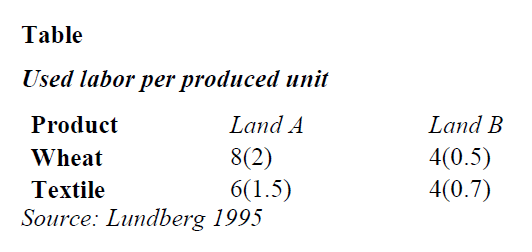International Trade Theories originated from that Mercantilism thoughts and ideas steered trade in Europe from the beginning of the sixteenth century until the end of the eighteenth century. In the beginning of the nineteenth century Adam Smith’s trade theory started to gain acceptance. According to mercantilism, welfare was based on the possession of gold and silver. Trade was seen as something good for a country. The disadvantage of mercantilism was that people thought that having more exports than imports, meant a better welfare for your country, as payment was made in metals. A surplus in exports would then mean more gold and silver. According to mercantilism it was believed that one country’s winnings would lead to another country’s losses, which meant that the economic policies were aimed at supporting export and putting restrictions on imports.
As mentioned earlier, Adam Smith’s trade theory was first accepted at the beginning of the nineteenth century. You could say that it was Adam Smith and David Ricardo that laid the foundation for the theory behind international trade. It was Adam Smith who introduced the concept of the invisible hand. He fought against the mercantile ideas and created theories on how specialization increased efficiency. Adam Smith meant that, depending on the producers different strengths and weaknesses, together they could increase production as well as real-income (commodities and services that one has at one’s disposal are seen as real-income).
In Adam Smith book The Wealth of Nation (1776) he compares a country’s situation with a family’s decision to either buy or produce the product themselves. To get an understanding of Adam Smith’s theory one can make the following assumption: Assume that the U.S and UK produce wheat and textile. If the UK is better at producing textiles compared with the U.S, whilst the U.S is better at producing wheat, then these two countries should trade with each other. This assumption means that the UK has absolute advantage when producing textile and should therefore only produce and export textile whilst importing wheat from the U.S. The U.S should do the same but the other way around. If these countries trade, wealth will then increase for both of them. Adam Smith’s theories brought about many thoughts, for example, what would happen if a country did not possess any absolute advantages for their products. Would this country have no trade?
David Ricardo had the answers for these questions, with his theory of opportunity-cost that goes hand-in-hand with the theory of comparative advantage. Comparative advantage means that a country should export products that they have the lowest alternative cost for and import products which they have the highest alternative cost for.
What this means, is that, trade occurs between two countries who tend to have international differences, in production technique and productivity. A country benefits from production-specialization if their collected real-income or consumption-possibilities are greater than with self-maintenance.

In this example one can see that country B is better at producing both wheat and textiles. Compared to country A, country B is better at producing wheat (when comparing both products you can see that the alternative-cost for wheat is lower for country B, 0.5 for wheat and 0.7 for textile) and should therefore focus on producing wheat and import textile from country A. Country A has no absolute advantages although they do have a better alternative-cost when producing textile compared to producing wheat. Therefore they should export textiles to country B and import wheat from them. The unanswered question that earlier existed could now be answered by that trade occurs with countries that do not have any absolute advantages.




